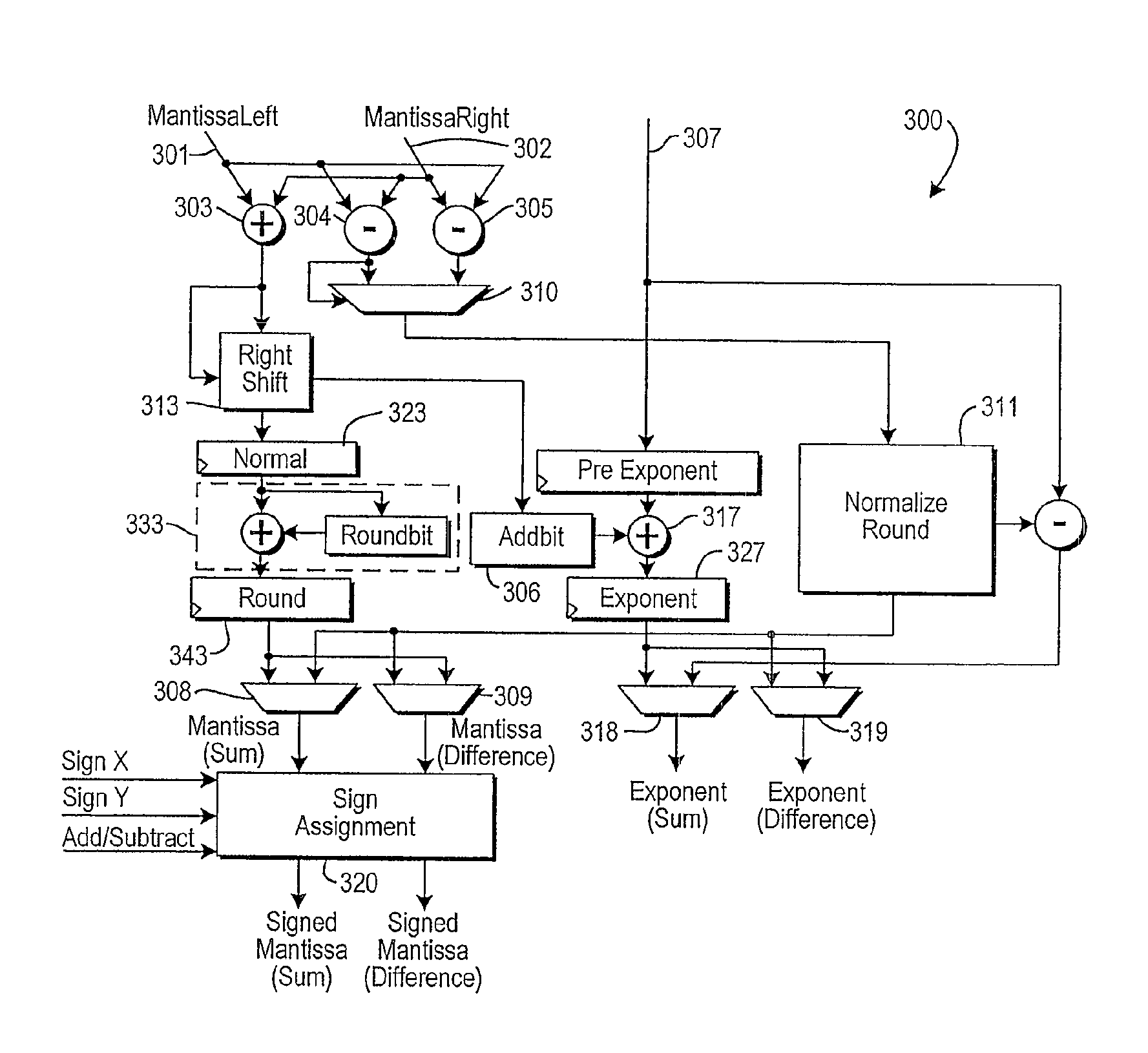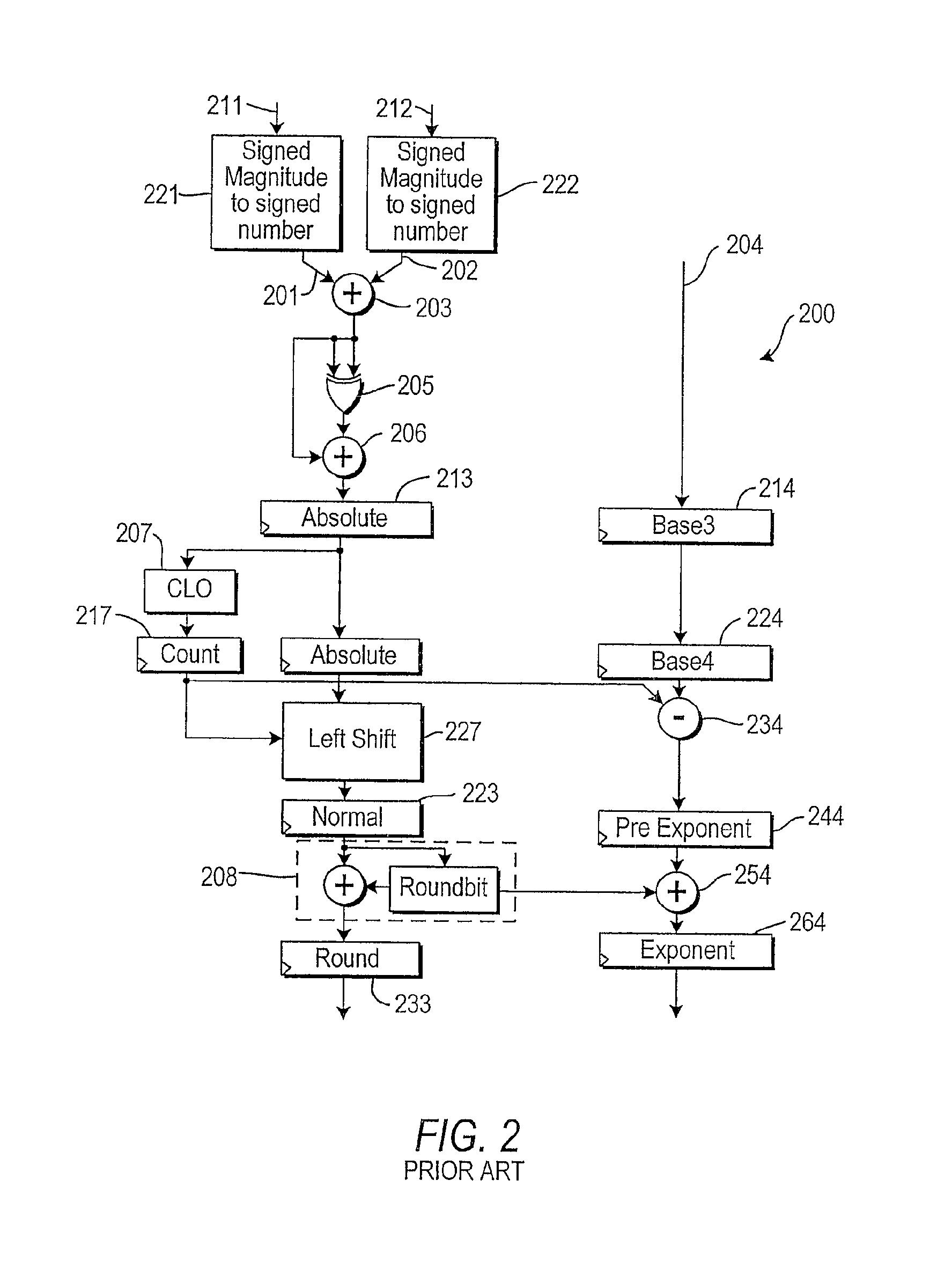Combined floating point adder and subtractor
a floating point adder and subtractor technology, applied in the field of performing floating point arithmetic operations, can solve the problem of inefficient provision of all of the resources to separately perform such operations, and achieve the effect of reducing the resources needed
- Summary
- Abstract
- Description
- Claims
- Application Information
AI Technical Summary
Benefits of technology
Problems solved by technology
Method used
Image
Examples
Embodiment Construction
[0014]Floating point numbers are commonplace for representing real numbers in scientific notation in computing systems. Examples of real numbers in scientific notation are:[0015]3.1415926510×100 (π)[0016]2.71828182810×100 (e)[0017]0.00000000110 or 1.010×10−9 (seconds in a nanosecond)[0018]315576000010 or 3.1557610×109 (seconds in a century)
[0019]The first two examples are real numbers in the range of the lower integers, the third example represents a very small fraction, and the fourth example represents a very large integer. Floating point numbers in computing systems are designed to cover the large numeric range and diverse precision requirements shown in these examples. Fixed point number systems have a very limited window of representation which prevents them from representing very large or very small numbers simultaneously. The position of the notional binary-point in fixed point numbers addresses this numeric range problem to a certain extent but does so at the expense of prec...
PUM
 Login to View More
Login to View More Abstract
Description
Claims
Application Information
 Login to View More
Login to View More - R&D
- Intellectual Property
- Life Sciences
- Materials
- Tech Scout
- Unparalleled Data Quality
- Higher Quality Content
- 60% Fewer Hallucinations
Browse by: Latest US Patents, China's latest patents, Technical Efficacy Thesaurus, Application Domain, Technology Topic, Popular Technical Reports.
© 2025 PatSnap. All rights reserved.Legal|Privacy policy|Modern Slavery Act Transparency Statement|Sitemap|About US| Contact US: help@patsnap.com



